Kev (@kev07713) had been away in Cornwall for much of the week with his wife Karen and I was hoping he'd still be able and interested to join our usual Saturday outing. I'd been watching bird reports and was very interested in heading back to RSPB Frampton Marshes as there were buff-breasted and semipalmated sandpipers showing frequently - our friends Adrian and Bryan had gone in the week and ticked these, and the lesser yellowlegs. Fortunately, Kev was up for another trip as the semipalminated sandpiper would be a lifer for him - he'd already ticked buff-breasted earlier in the year, and we'd seen lesser yellowlegs at the Lower Otter Restoration Project in mid-April. The sandpipers would be more than enough.
We arrived to reports that the buff-breasted sandpiper was showing well on the wet grassland from the sea wall, just south of the Sea Bank car park. There was no report of the other birds as yet and so we set off directly to the seawall, turning south towards a group of birders already in place, passing others already returning happy.
We stopped short of the group and scanned the grassland, seeing linnets and larger numbers of meadow pipits before then finding the sandpiper feeding constantly just on the opposite edge of a pool. The sandpiper is such an elegant bird, displaying a warm tan all over, with light-edged black feathers on its back, wings, and the top of its head, that give it a characteristic scaly appearance. It has a relatively short fine bill and medium-length yellow/mustard legs. It is a scarce visitor from North America but does occur annually in the UK - especially visiting Cornwall.
We set up scopes and I set about trying to get a photo record while Kev phonescoped for images and videos - for long periods we just watched but carefully scanned through all the birds as you just never know what else might turn up.
Kev started to wander off and scan further back down the wall, eventually chatting with our friends Nick (@old_caley) and Anne Truby (@Dottydotterel) who had just arrived. I picked up the last of our kit and my scope and fell back to join them for a chat and catch up. In our rush to get here we'd not managed to stop for breakfast, but that would have to wait - the semipalmated sandpiper had just been reported again on middle scrape from the 360 hide. This was a chance for Kev to add to his year list for the first time today.
This sandpiper is a very small, plump shorebird with a thin, straight, tubular bill. When folded, the wings are about the same length as the tail. Juveniles are similar to nonbreeding adults, but the upperparts show a neat, scaly pattern - they walk slowly through mudflats and wetlands, rapidly and continuously pecking or probing for tiny invertebrate prey with their relatively short, blunt-tipped bill.
This species breeds on high Arctic tundra and typically migrates to coastal South America for the winter - an obvious reason for this one to be found on the Lincolnshire coast ... the semipalmated sandpiper gets its common name from the short webs between its toes (“palmated” means webbed) - sometimes tricky to pick this out at distance in the field. The issue we were going to face was that it would resemble the dozen or so little stints (mixed adult and juveniles) out on the scrape - we might need to be listening to some experienced birders that were capable of separating the two species at distance - it wouldn't be close to the hide, would it? Quick answer to that - no.
In the hide there were people sitting on the benches by the window but then three rows of birders on scopes - as newcomers we were on the back row. We managed to find a height where we could see through the windows, but it became apparent that the people sitting and between us and the window were very mobile and it was really quite tricky to maintain a clear view, often people having to ask for observers to not stand in front of the windows to give everyone a chance.
It took a while of watching dunlin, ringed plover and little stints before a call went up to say that someone was on our bird. On this occasion I missed it, not having a good line of sight, and within a couple of minutes it was on the wing and more off to our right. There were descriptions of where to look, often referring to the East Hide opposite which I couldn't see as it was obscured by the top of the window. However, soon the descriptions started to include detail of other birds, most importantly shelducks - bang, I was on it - life tick. I tried to take some photos, but it was impossible given the scrum and trying to pick out the bird at this range - a few attempts resulted in images of little stints rather than the sandpiper. I hopped on a couple of other scopes to make sure I was following the correct bird and confirmed, we had nice views of the bird preening facing the hide. I tried to take another photo from the rightmost benches when the bird had flown even further but with no success - I gave up and made do with some lovely little stints at closer quarters.
We had been joined by Nick and Anne who had also got on the bird and elected to stay when reports of a Lapland bunting were posted on Birdguides - just beyond the spot where we had been viewing the buff-breasted sandpiper. Breakfast was now out of the question and our visit to the Visitor's Centre would qualify for lunch.
On the sea wall we again enjoyed views of the sandpiper and chatted to the chaps who had reported the bunting - it had flown across this scrape to and likely over a gate on the sea wall. Damn - it had apparently been seen over the last three days so would likely be back. We ventured along the sea wall to the gate and scanned around but the bird could be anywhere. - not in view now. As we continued to scan, I found a merlin perched on a distant fence and alerted the others. I've been hoping to see one perched but had not anticipated it would be a mile away. I snapped a record shot.
Behind us a lovely wheatear perched on a post and was largely overlooked with other quarry on our minds.
By now Kev had started talking to a chap (Des) that he'd spent time with in a hide waiting for the recent sharp-tailed sandpiper (which they eventually dipped). We walked back with him and heard that a jack snipe had been reported along the same stretch as the bunting and so we took our time scanning with scopes regularly. We soon got back to the Sea Wall car park where Des was parked and said our goodbyes for now - we were off for a spot of lunch. On the way we bumped into Nick and Anne who had been for lunch already and were off to look for the Lapland bunting.
After lunch we set off again but split up as I thought to try for a photo of the semipalmated sandpiper, lesser yellowlegs or the recently reported white-rumped sandpiper. The hide was a little less rammed, but the sandpipers were not in view and the lesser yellowlegs had flown. I decided not to stay long and went to catch up with Kev who'd gone on to see if he could locate either of the jack snipe or Lapland bunting - I found that he'd not made it far as he'd found a large number of birds had dropped into a pool on the left.
He'd picked out several common snipe but was still missing a jack snipe so eventually we climbed back up onto the sea wall for another look for either Lapland bunting or a jack snipe, picking Des up on the way. We connected with the buff-breasted sandpiper again, and while I concentrated on going through all the small birds on the ground and over, Des and Kev quartered along the sea wall in search of either. We gave it a good hour and a half but eventually had to tear ourselves away empty handed and make for the car but stopping to investigate the various pools as we went. Alongside the path were some very confiding ruff feeding on a grassy bank but there was little more to add. We set off and phoned our other halves to report on our late estimated arrival time - apologies made.

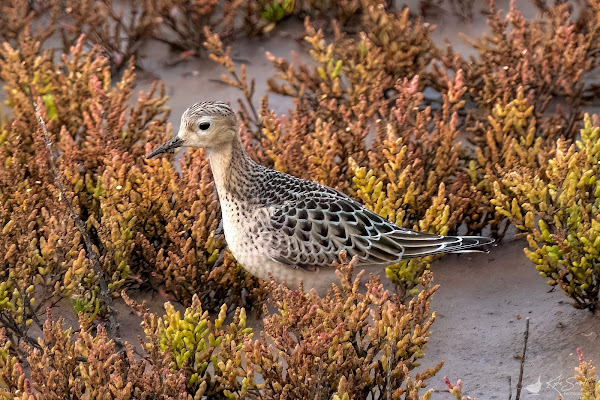
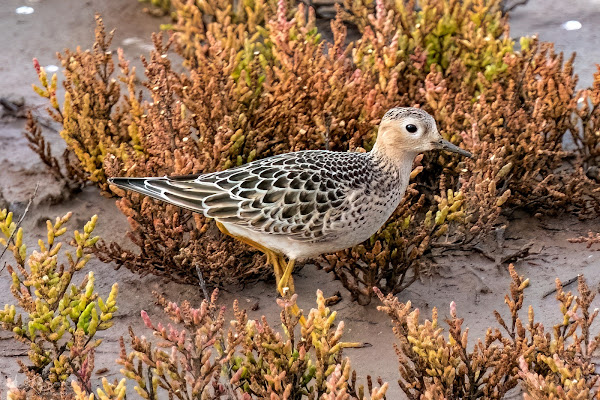
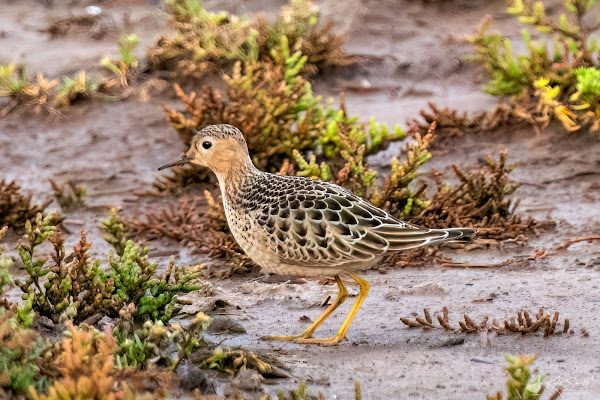
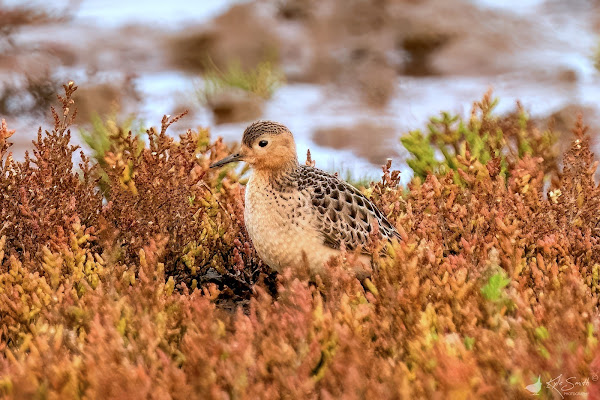
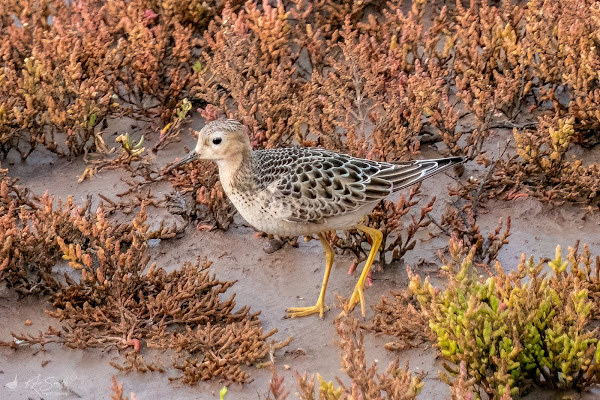
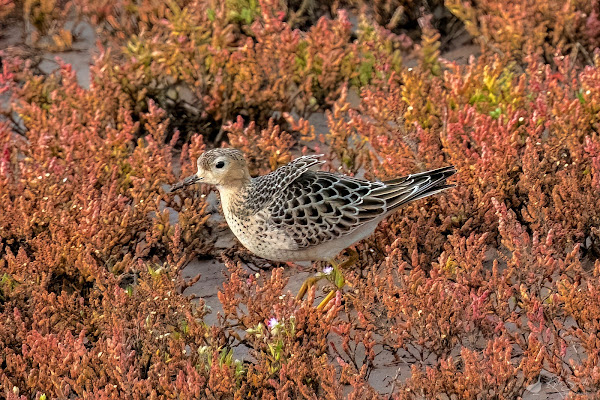
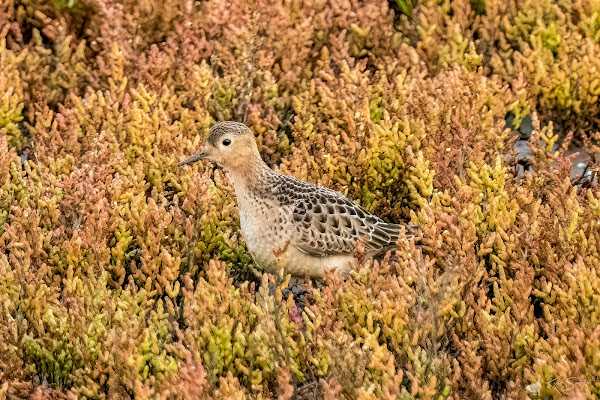
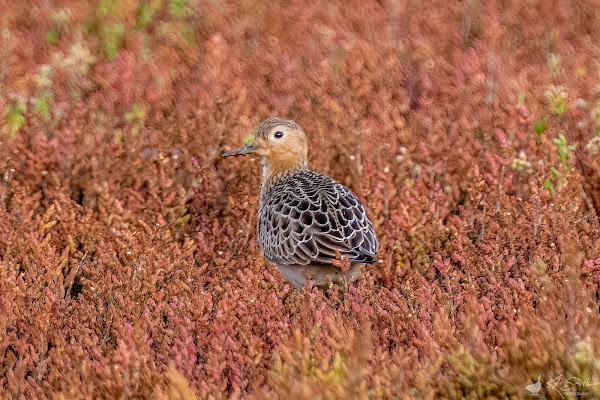
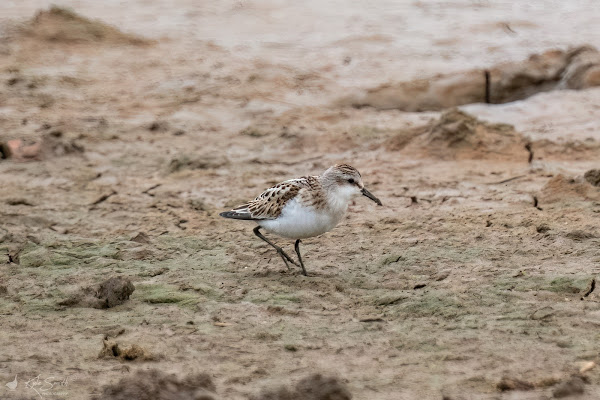
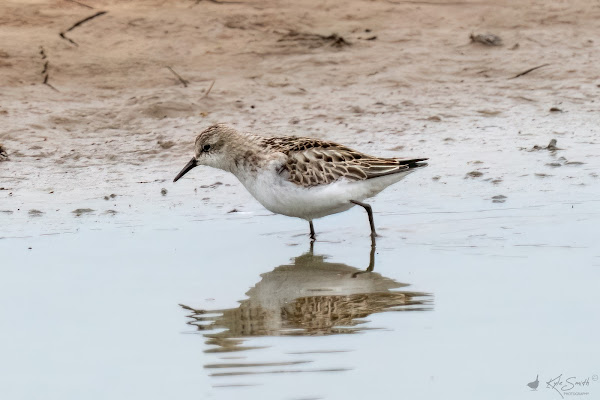
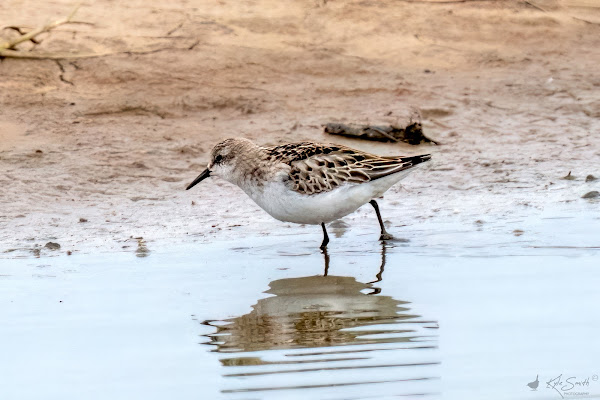
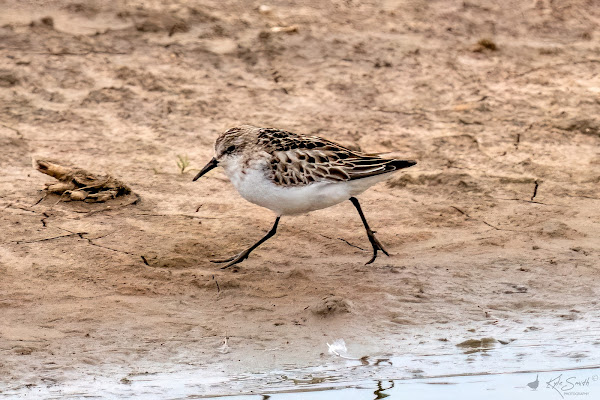
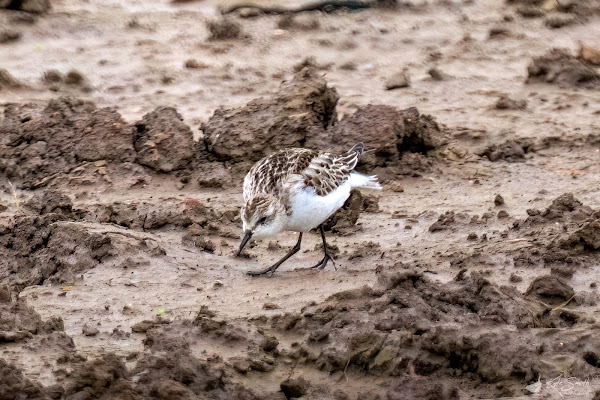
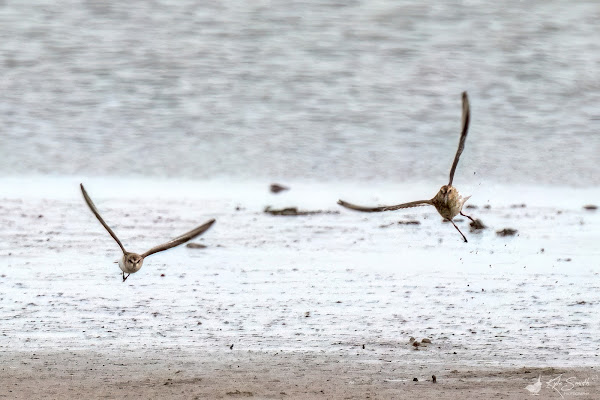
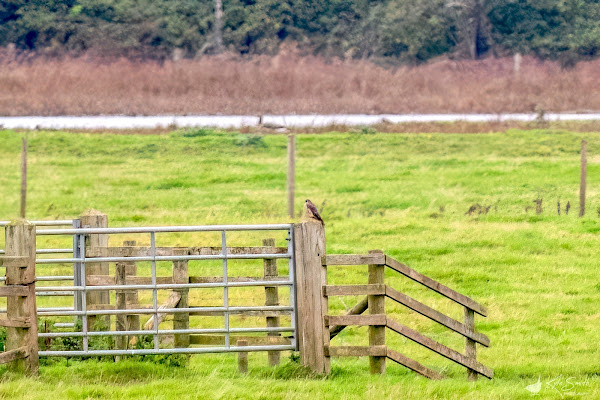
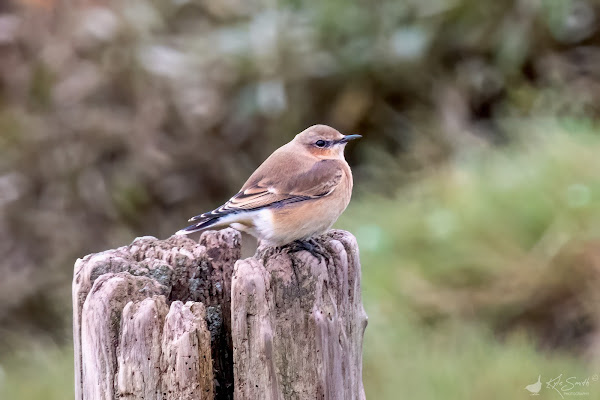
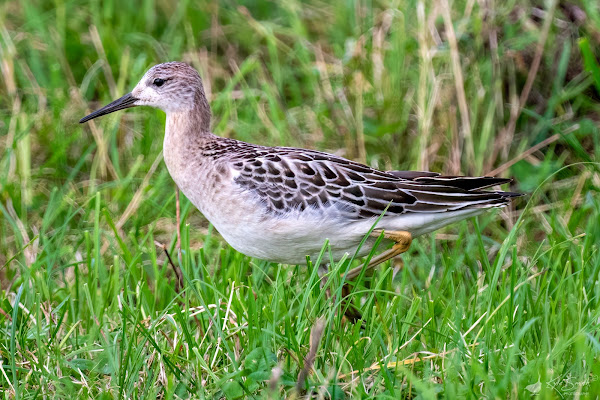
No comments:
Post a Comment